#Frederic II
Explore tagged Tumblr posts
Text

Study of Portrait of Frederick the Great by Wilhelm Camphausen. Colour pencils.
#frederick the great#frederic ii#prussia#wilhelm camphausen#myart#fanchlebu uses colour#colour pencils#color pencil#artists on tumblr#portrait#traditionalart#traditional art#drawing#rysunek#portret#fryderyk wielki#prusy#xviii century#kredki
31 notes
·
View notes
Text
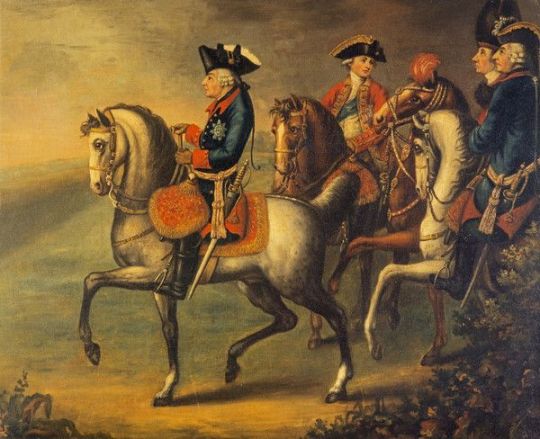
Frederick II (the Great), 1712 - 1786. King of Prussia (With Field Marshal James Francis Edward Keith, 1696 - 1758 and Two Unidentified Prussian…
Artist: Unknown
Date: After 1750
Medium: Oil on canvas
Collection: Art Galleries of Scotland, Edinburgh, Scotland
#painting#landscape#genre art#frederic ii#king of prussia#james francis edward keith#german history#horses#equestrian#oil on canvas#artwork#oil painting#fine art#men#soldiers#uniforms#costumes#frederick the great#elector of brandenburg#18th century painting#art galleries of scotland#german monarchy#german monarch
16 notes
·
View notes
Text

"If birds of prey hunting is a pleasure, as Lacurne de Sainte-Palaye asserted in the 16th century, it's also a science. Emperor Frederick II († 1250) was an expert on the subject. His treatise 'De arte venandi cum avibus', illuminated in Naples at the time of his son, Prince Manfred, was translated into French at the very beginning of the 14th century, and the illustration of this new version was copied from the Neapolitan model. The author describes the animals hunted and the various species of falcons, before going on to discuss hunting techniques, breeding, training and care of the birds. He points out that this art is not suitable for children. The young falconer must be sufficiently developed to have a voice that carries far. Skill in movement, agility and boldness are essential. He must also know how to swim, so as to be able to reach his bird when it's on the opposite side of a body of water. In fact, the painter depicted the hunter swimming across a lake to reach his hawk which is holding his prey."
Marie-Thérèse Gousset, Enluminures médiévales [Medieval Illuminations], 2005, BNF, p. 45.
The incredible illustration is from: Frédéric II de Hohenstaufen, Traité de fauconnerie, L'art de chasser avec des oiseaux, trad. de Jean II de Dampierre Champagne, vers 1310, BNF Fr. 12400, f. 115v.
Illuminator: "Simon d'Orliens"
5 notes
·
View notes
Text

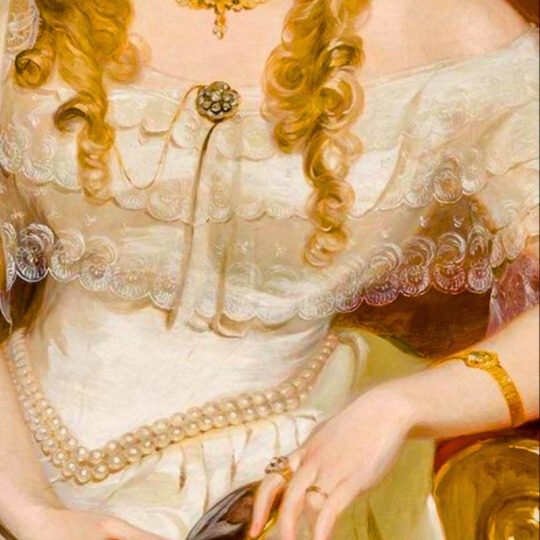



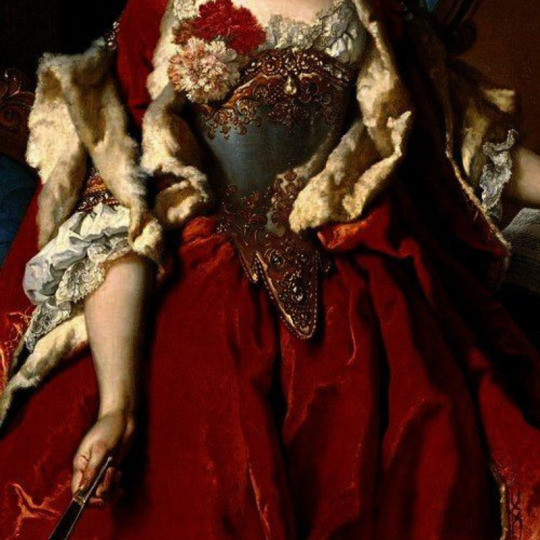
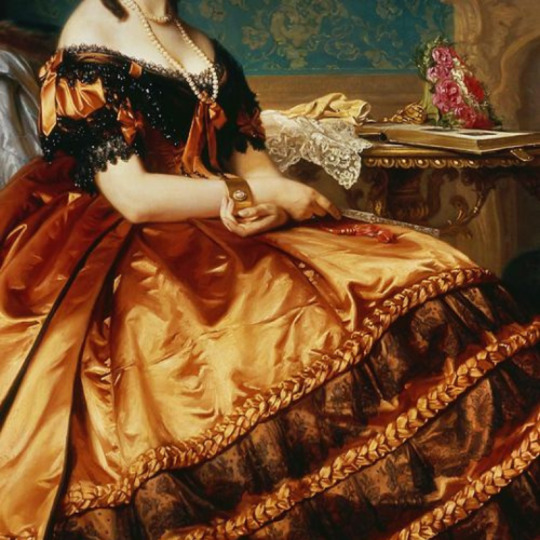
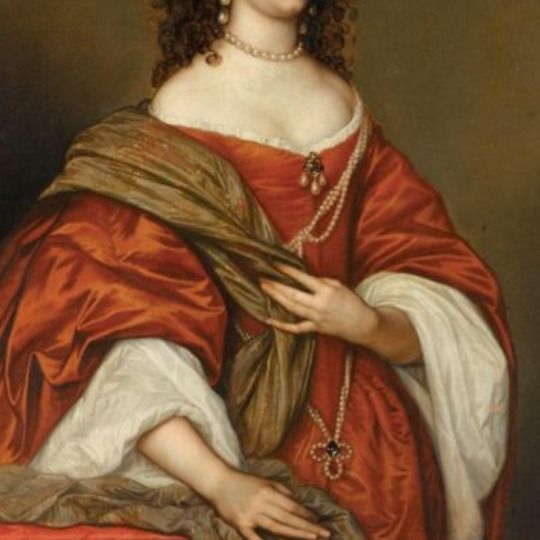
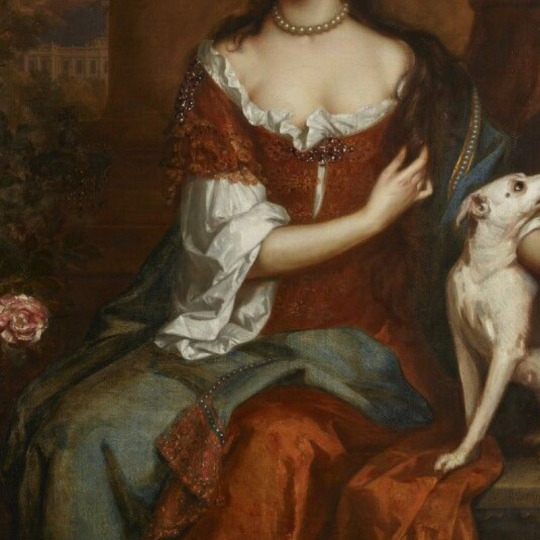


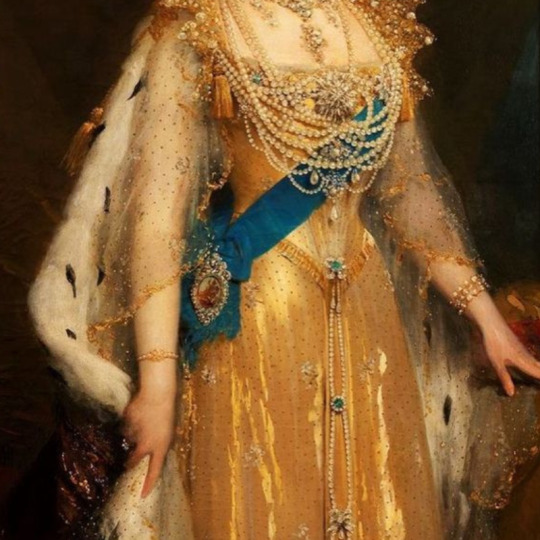
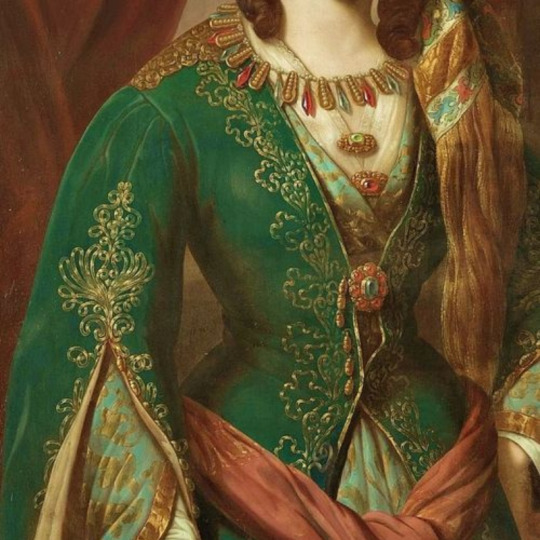

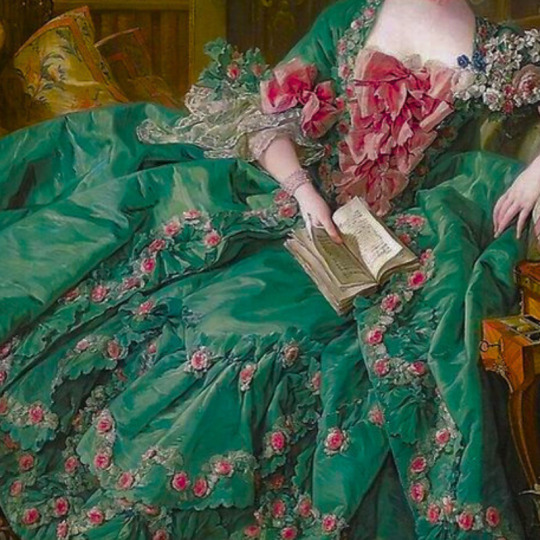
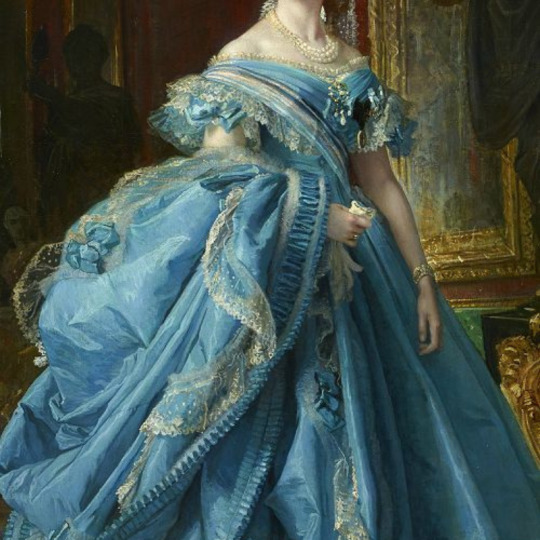
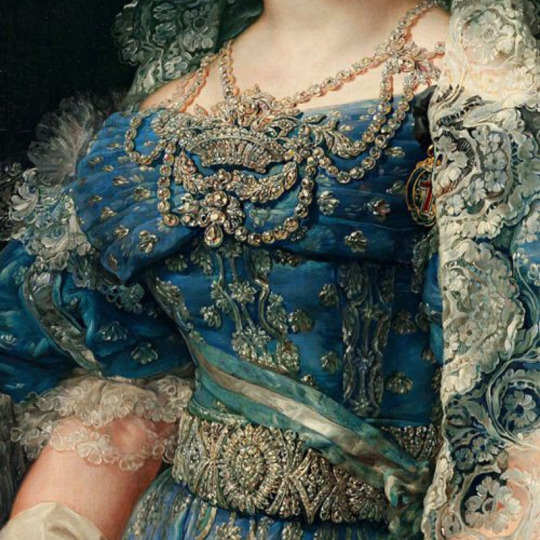
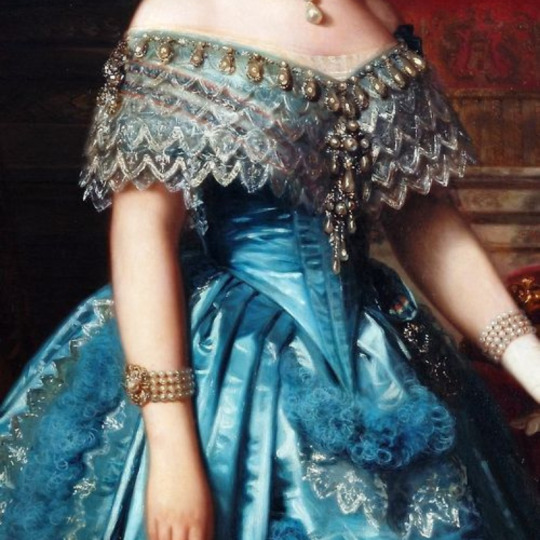


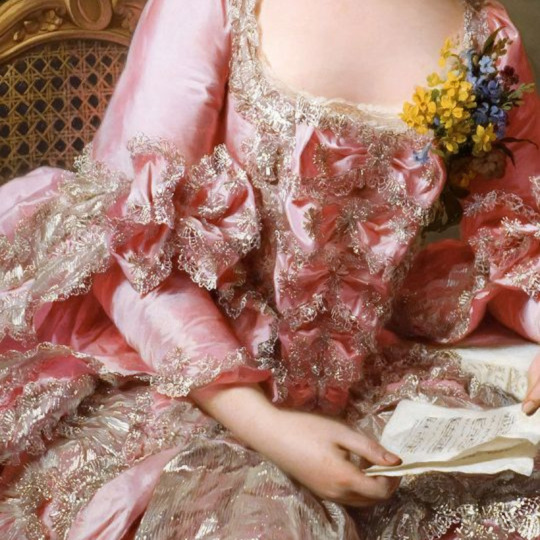


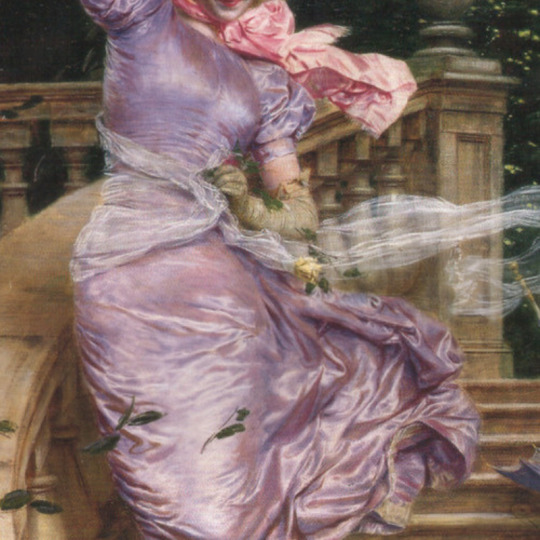


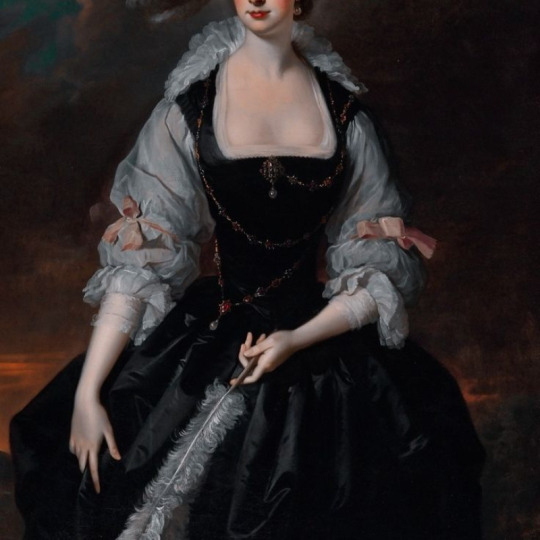
dresses in art
#portrait of the hon. mrs harold by john collier#unknown i cant find this one#portrait of josephine stieler as a bride by joseph karl stieler#portrait of frances anne vane by alexandre jean dubois#portrait of isabelle antoinette barones sloet van toutenberg by nicaise de keyser#portrait of marguerite de seve by nicolas de largillere#portrait of emilia wlodkowska by jozef simmler#portrait of a lady by adriaen hanneman#mary of modena by willem wissing#esther and ahasuerus by artemisia gentileschi#alexandra feodorovna by a malyukov#don't know the artist but its supposed to be the coronation dress of queen alexandra#woman in turkish dress by paul emil jacobs#portrait of juliane by johann heinrich tischbein#portrait of madame de pompadour by francois boucher#princess isabella of asturias vicente palmaroli#maria christina de borbon-dos sicilas reina de espana by vicente lopez y portana#isabella ii queen of spain by federico de madrazo y kuntz#afternoon tea for three by frederic soulacroix#princess maria carolina augusta of bourbon by franz xaver winterhalter#marie suzanne giroust by alexander roslin#the new bracelet by frans verhas#a lady in a lilac dress by wladysaw czachorski#a gust of wind by gaetano bellei#maria grafin zu munster by harry von hente#retrato de dona antonia roca y mestre by angel maria cortellini#frances courtenay by thomas hudson#i loved colorcoding this and i used some from my last edit#art history#history
2K notes
·
View notes
Text









discord doods vol. 3 moist timeline edition ✨ tags below
Deacon Virgil and Cici @plaquerat
Guppy and Terzo/Teofila @tricksyfishyyyyy
Antifreeze @aweisz
Archbishop Armand @orioncorium
Betta, Sibling Rizz, Sausage, and Freder @sacred-coffin
#the band ghost#original characters#others ocs#cardinal guerra#sister lucretia#baby sausage#antifreeze ghoulette#deacon virgil#freder the dog#guppy ghoulette#archbishop armand#papa emeritus iii#papa terzo#teofila emeritus#sister imperator ii#papa emeritus iv#frater imperator#oc x canon#sibling rizz#betta ghoul
59 notes
·
View notes
Text


Taglist: @photogirl894 , @kanerallels , @bigfrozensix , @lucy-shining-star , @animationfan3000 and anyone else who wants to vote.
#the most favorite disney father 2025#disney father#king frederic#king roland ii#tangled#sofia the first#most favorite disney father round 1#round 1c
23 notes
·
View notes
Text
Everything about Gab/Gabby from Yomi no Tsugai, Part 1
Part 2 here Part 3 here
A compilation of everything we know about Gab/Gabby (I prefer Gab) as of now, starting from chapter 1. This is gonna get super long, so buckle up, people.
Not spoiler free, obviously.
1. She is a human shown with a shadow on multiple instances, and a tsugai user, her tsugai being a set of upper and lower jaws with many eyes and really sturdy teeth. We later learn that the tsugai are called Gabriel. They can also shrink to an adorable size
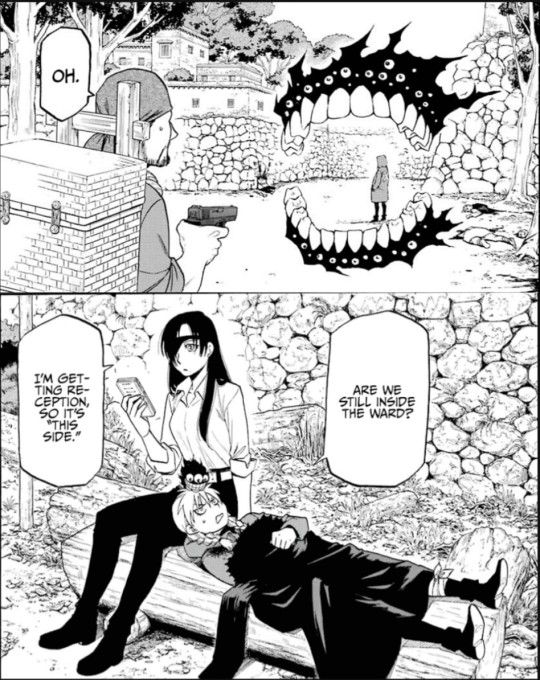
2. By her own admission, she doesn't "bite" (kill) children

(Traumatising them for life, however , seems to be a different story)
3. a) She and Gabriel are oddly synchronised, with her needing to make the 'gobble' gesture for Gabriel to be able to bite.

Other than Gab, Asa is literally the only one who needs gestures, needing to open her right hand to wield Kai's powers. And mind you, Kai is no normal tsugai
b) Unlike Asa, Gab can use either hand for this

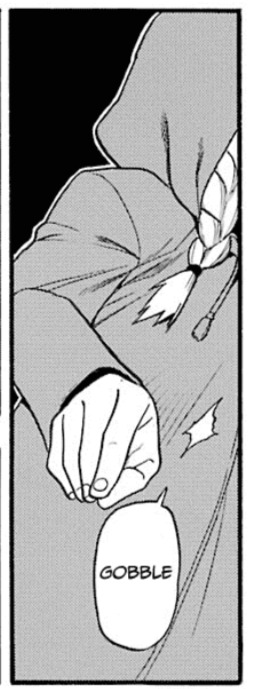
4. She doesn't like Gabriel being called a monster
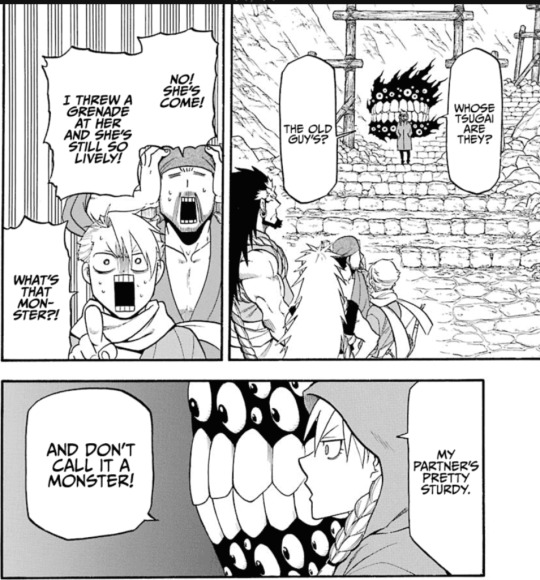
5. She's "used to pain"

6. She's very defensive of Asa

7. She's a) apparently right handed and b) apparently shit at drawing (while Gabriel aren't), because hating Yuru isn't an excuse enough for that atrocity of a drawing
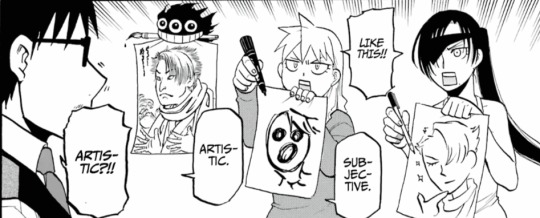
8. She understands what Gabriel "say" to a certain degree

Continued in part 2, because damn the 10 image limit.
Part 2
#yomi no tsugai#ynt#daemons of the shadow realm#ynt gabby#gabby#gab#ynt gab#gabriel#ynt gabriel#joe william frederic gabriel I#kirk douglas woodgrave gabriel II
11 notes
·
View notes
Text



#disney polls#father#king roland#king raul#king frederic#roland II#sofia the first#elena of avalor#eoa#disney tangled#tangled the series#rapunzel's tangled adventure#king roland II
42 notes
·
View notes
Text
i have no excuse for this post other than im sick and im going to project that onto my fav spartan iis about it.
halo's blue team headcanons, except they're sick <3
JOHN - 117 .
☆ tries to push through it. because of course he does.
☆ he knows he should rest, but the itch to always be doing something makes him restless and he can't stand sitting around. usually, the medbay staff have to ask whoever in the chain of command he's answering to at that moment to order him to comply, or they have to ask fred to wrangle him into cooperating.
☆ because augmented supersoldiers probably shouldn't be operating powerarmor that connects to their BRAIN while they have FEVERS, he probably has to get out of mjolnir, and he HATES IT. he feels so unsafe, so exposed - he can't sleep unless there's someone else in the room watching his back for him. blue team takes shifts to cover each other and make sure he actually rests.
☆ to his credit, he complies very readily with orders related to medication and antibiotics and what have you. he knows the meds are the fastest way to get the illness out of him, but that does not mean he likes it.
☆ constantly grasping at straws to try to keep himself alert, but he slips up every so often. a muttered insult here, an accidental facial expression there - he's just a little more unfiltered. he hates this, too.
☆ overall is very uncomfortable, but moreso uncomfortable with how out of it he feels and the fact he knows he's in a vulnerable state. please keep him with his teammates he will not rest if you don't let them help take care of him.
FREDERIC - 104 .
☆ big baby. huffs and grumbles about being sick because he has work to do!! he can't just sit around and do nothing, he's busy! plus they have suit maintenance soon and he scheduled a slot for training in two days and-
☆ very upset he can't help the team out. he hates being unable to do what blue often relies on him for, and he WILL go behind their backs to try to do it on his own. most times, they have to compromise into letting him do SOME of the work while another team member helps him or supervises so he doesn't overwork himself.
☆ very, very bothered by the symptoms he experiences. he's used to Not having weird temperature regulation shit and a headache and congestion and all this other shit so he is. always uncomfortable constantly until the symptoms ease up
☆ has to tell himself "doctor's orders" and "it'll make it go faster" before taking his meds for the illness. his ass does NOT like having to take medication. for ANYTHING.
☆ unlike john, he's HAPPY to curl up and sleep for a full day if you let him. he knows he doesn't need it, but he sure as fuck does love getting to sleep when given the chance.
☆ avoids going out into frequently used spaces of wherever he's sick at, because he'd feel guilty if he got marines or other personnel sick. if it got to him, as a spartan, he doesn't want to know what would happen to a nonaugmented person. and he doesn't want to be the reason they find out.
☆ jokingly calls himself defective for getting sick all of once. the three "don't you fucking dare" type looks he got from his teammates made him quickly decide against doing that again.
KELLY - 087 .
☆ drama queen, good lord. bitches and complains about being sick the whole time. she's always so fast, and go go go, that having to slow down is TORTURE to her.
☆ insists she is fine. constantly. she is not. like john, she has to be wrangled. this does not always work.
☆ repeat offender of trying to ignore the fact she's sick and pushing herself so hard she makes it worse because she refuses to admit she can't go at full throttle.
☆ when she's FINALLY herded into bed and accepts she's sick, she knocks out for a full day and wakes up wondering what day it is because she's so disoriented. she needs to learn what taking a break means. especially when it comes to being sick.
☆ she'll take her meds, don't worry - she just needs to complain about it first and she'll be fine.
☆ secretly enjoys being sick sometimes, because it means she can avoid being bossed around to do menial tasks that she doesn't want to do. even if it means she has to deal with her siblings squinting at her constantly to make sure she's resting.
☆ really, really hates how being sick makes her physically feel. just the feeling. she knows that, even seriously ill, she could outrun a warthog if she had to. she just feels icky and tired and sluggish and it's really annoying ,, :/ smh.
☆ uses how fast she can beat her teammates in a spar as a gauge for how recovered she is once she starts to feel better. she keeps track of her best times, so she knows when her performance is back up to speed. :)
LINDA - 058 .
☆ bless her, linda is so in tune with herself that she knows the instant she starts to fall ill. she shows up at medbay, says she's getting sick, and asks for an immune booster to try to ward it off before it gets too severe. she is so reliably on target with this that there's a note in her file saying to believe her when she says she's sick. because she does.
☆ very compliant with what she is told to do. bedrest? okay, that's more time to meditate if she can't sleep, then. antibiotics? yessir, takes them without complaint. avoid heavy exercise? if you say so.
☆ she's very patient, and despite her general lack of trust in non-specialists that she works with, she knows that it's their job to get her back in working order. plus, the faster she recovers, the less she'll have to see the damn medbay. after her revival, she really does hate medical settings. so, she'll go along with it.
☆ like john, she doesn't like feeling exposed, and sleeps best when she has someone in the room with her. but she doesn't ask for her team to cover her in shifts - she'll show up where they are for a nap. settles against the wall while kelly goes for a run in the gym, lean against fred's legs while he deals with paperwork and scheduling for the team, sits with john whenever he actually sits still for once. she'll go to them. they know this, and they trust her to tell her if she needs anything else.
☆ the most susceptible to fever dreams out of the four. wakes up with a frown or dazed and recounts what she remembers to the team, mostly because they get so fucking weird that it's interesting to talk about.
☆ can't stand being sick because everything feels WRONG. she mediates so often, knows herself so well, that having things be wrong or different with herself and not being able to fix it drives her crazy. she wants it to be over and she wants it to be over NOW. sometimes, it gets really overstimulating to her.
☆ the only one out of the four to wait for the medbay to clear her for duty once she feels better. with how complicated her recovery after being revived was, she's not taking any chances at getting wiped out just when she thought she was doing better.
☆ "this fucking sucks. ...stop laughing at me, it's not funny."
#sources:#halo#characters:#linda 058#frederic 104#kelly 087#master chief / john 117#post type:#headcanons ☁️#posted by:#znmjr 🦈#//#blue team#spartan ii#halo spartans#halo spartan#fred 104
6 notes
·
View notes
Text
Queen Margrethe 2. of Denmark abdicates
This has nothing to with TMNT, but since I'm Danish, this is a big deal to me.
Last night, during her New Years speech, the queen officially said she abdicates, reason being her health and age. I fully understand and respect her decision, but I will miss my chain smoking, hotdog eating queen.
From the 14th of January 2024, Denmark's reigning monarchs will be King Frederik 10. along side his wife, the soon to be Queen Mary.
Long live the Queen in all her future endeavors, and long live the future King.
#queen margrethe abdicates#queen margrethe#queen margrethe of denmark#crown prince frederik#crown princess mary#king frederic#queen mary#king frederik x#queen margrethe ii#danish royal family
18 notes
·
View notes
Text
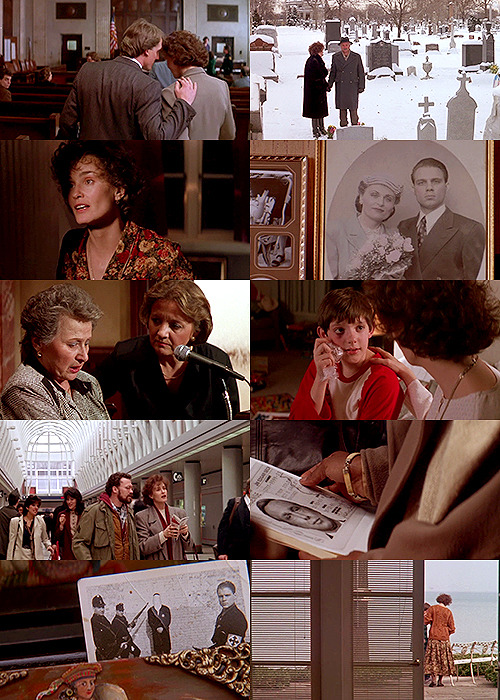
Music Box (1989). A lawyer defends her father accused of war crimes, but there is more to the case than she suspects.
As a Jessica Lange lover and a courtroom drama fan, I was really looking forward to this one, but idk! It's certainly not her best performance, nor really a great entry into the genre. That's not to say that it doesn't have it's moments - the story of a lawyer defending her now-elderly father after he's been accused of commiting war crimes before she was born is an interesting one, but I don't think it ever decides entirely what it wants to be. It's part melodrama, part courtroom drama, part father-daughter story, part WWII story, part Hungarian immigrant story, and it doesn't really thread it all together in a way that really pulls you in.
Disappointing, because I think there is a good movie in here, but it just doesn't quite work. 6/10.
#music box#1989#Oscars 62#Nom: actress#costa-gavras#joe eszterhas#jessica lange#armin mueller-stahl#frederic forrest#lukas haas#donald moffat#cheryl lynn bruce#world war ii#war#father-daughter#courtroom drama#6/10
6 notes
·
View notes
Text
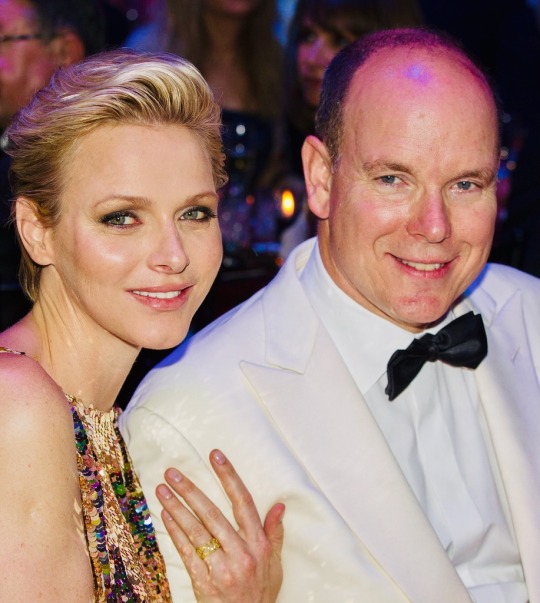
3 August 2012 | Prince Albert II of Monaco and Princess Charlene of Monaco attend 64th Red Cross Ball Gala in Salle des Etoiles at Sporting Monte-Carlo in Monte-Carlo, Monaco. (c) Frederic Nebinger - Pool /Getty Images
4 notes
·
View notes
Text
According to an ancient legend, the major Greek philosopher and religious figure Empedocles of Acragas (he died ca 430 BCE) threw himself into Etna.
According to another, later legend, this time of Roman Catholic origin, the soul of Holy Roman-German emperor and king of Sicily Frederic II Hohenstaufen (stupor mundi -"the Wonder of the world"- and the great enemy of several popes, who died in 1250) was precipitated after his death into Etna by the devil...





mt etna, july 2024
307 notes
·
View notes
Text

Frederic Henri Kay Henrion (1914-1990; born Nuremberg, Germany, as Heinrich Fritz Kohn; lived in the U.K. from 1936), poster for the Ministry of Food, probably some time between 1940 and 1945.
Intentionally or not, this mimics Soviet posters of the 1920s in that it combines lithography and photography.
0 notes
Text





























Sansa Stark + Betrothals/Marriage
Bartolomeo Cavarozzi, Virgin and Child with Angels (1620) // AGoT, Arya I // AGoT, Sansa VI // Lucas Cranach the Elder, Salome with the Head of St. John the Baptist (1526) // Eleanor Fortescue-Brickdale, Illustration for Enid in Idylls of the King (1913) // ASoS, Sansa I // ASoS, Sansa III // Eleanor Fortescue-Brickdale, The Uninvited Guest (1906) // Guillaume Seignac, The Red Rose (n.d.) // Marie Spartali Stillman, Love’s Messenger (1885) // ASoS, Sansa III // William Mouat Loudan, Elaine (1899) // ASoS, Sansa III // Girl and Knight, Pinterest // Workshop of Dirk Bouts, Christ Crowned with Thorns (n.d.) // ASoS, Sansa III // Vladimirovich Pukirev, The Unequal Marriage (1862) // ASoS, Sansa III // Crying Woman, Pinterest // ASoS, Sansa VI // Frank Dicksee, Romeo and Juliet (1884) // Crying Dove detail, Pinterest (n.d.) // Domenico Veneziano, Portrait of a Young Woman (n.d.) // ASoS, Sansa VI // Harry George Theaker, A Song of Love (n.d.) // TWoW, Alayne I // Edmund Blair Leighton, Stitching the Standard (1911) // AFfC, Alayne II // TWoW, Alayne I // George Frederic Watts, Sir Galahad (1860-62) // AFfC, Alayne II // Follower of Eleanor Fortescue-Brickdale, Beneath the Blossom (n.d.) // TWoW, Alayne I // John William Waterhouse, Lamia and the Soldier (1905) // TWoW, Alayne I // John William Waterhouse, Isabella and the Pot of Basil (1907) // AGoT, Sansa III // Blue Rose, Pinterest // Francesco Hayez, The Kiss (1859)
166 notes
·
View notes
Text
Everything about Gab/Gabby from Yomi no Tsugai, Part 3
Part 1 Part 2
A continuation of Part 2. Not spoiler free.
16. She calls Asa "my girl"

(Yes, this is very important. Yes I know that this isn't actually Asa. Hush, you spoilsport.)
17. She fought Akio when they first met, and is responsible for the mountain god's missing horn
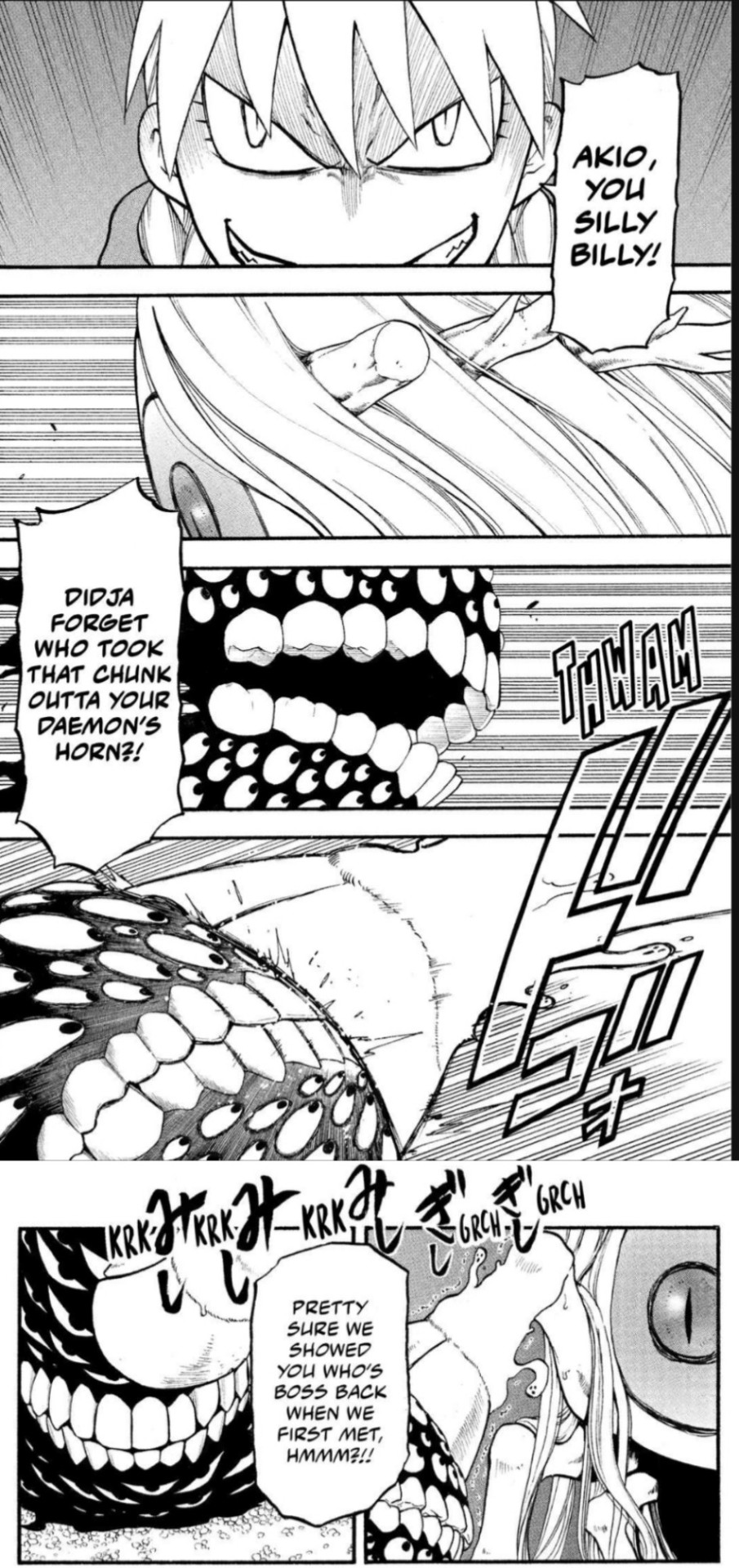
Now, this part is pure speculation but I think they fought before Gab joined the Kagemoris, mostly because I don't think anybody tolerates that level of infighting
18. She drinks coffee. Yes, again, this is important- Ok, fine. She doesn't really understand Hagure-sensei's appreciation of human imperfections

(And she also chews gum while attacking Higashimura, btw. Sorry, this should've been in part 1, I forgot to include it.)

19. She's a fan of Hagure-sensei's manga because it doesn't have bad guys. (Her soft expression here is killing me 😭)
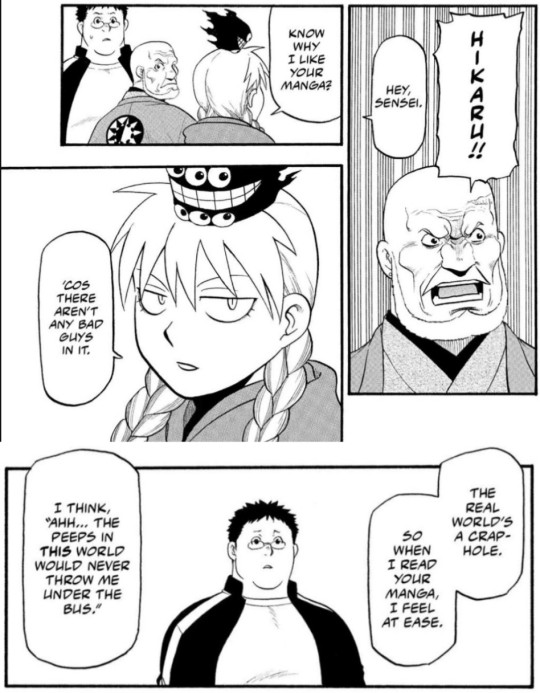
20. She's fiercely loyal to the Kagemoris, thinking of the clan as her home and declaring that she would even go as far as killing a parent to protect it
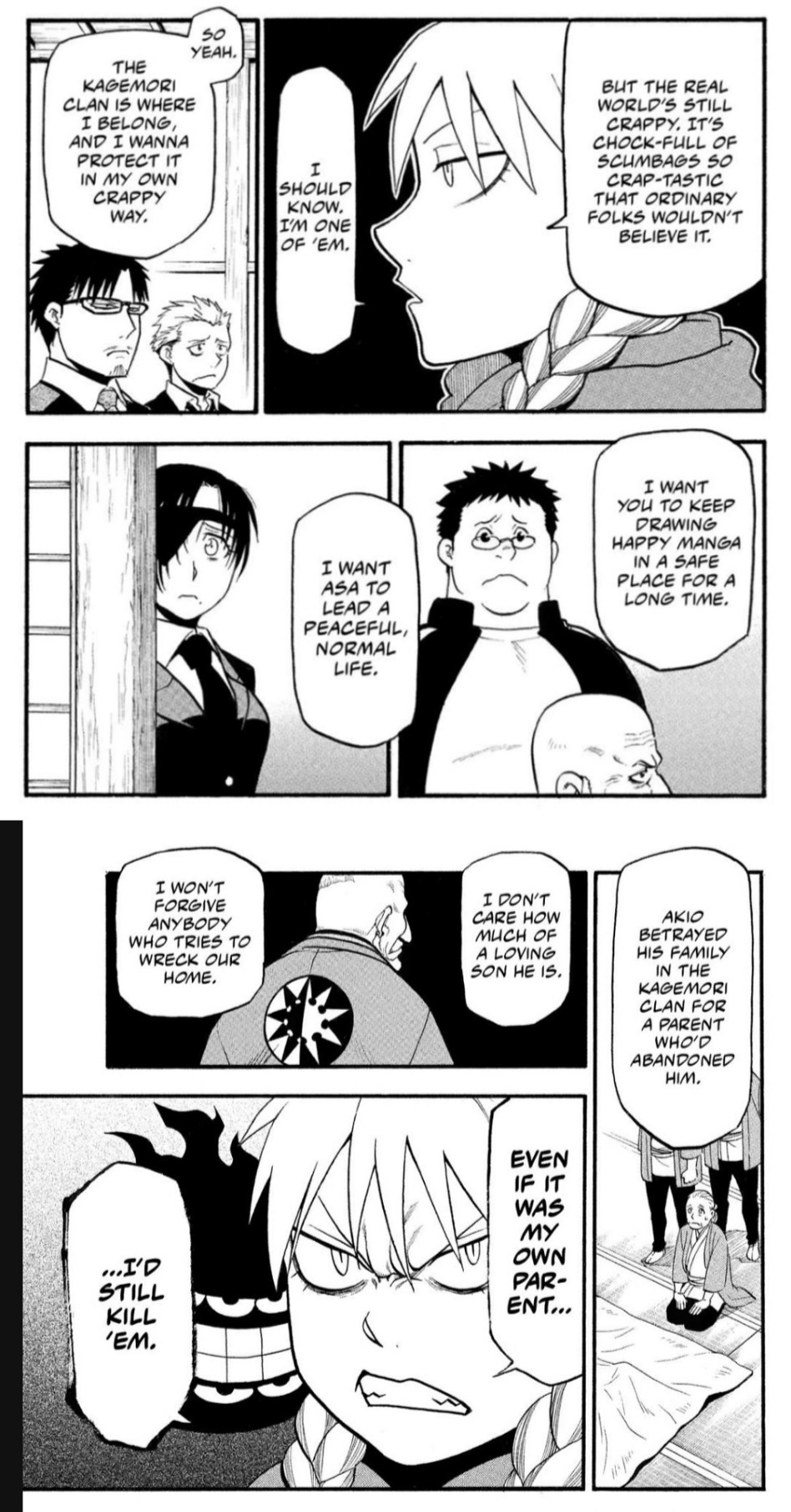
21. She wants Asa to stop constantly apologising and blaming herself for everything (and so do I, but this ain't about me)


22. She and Asa are homeschooled by Natsuki
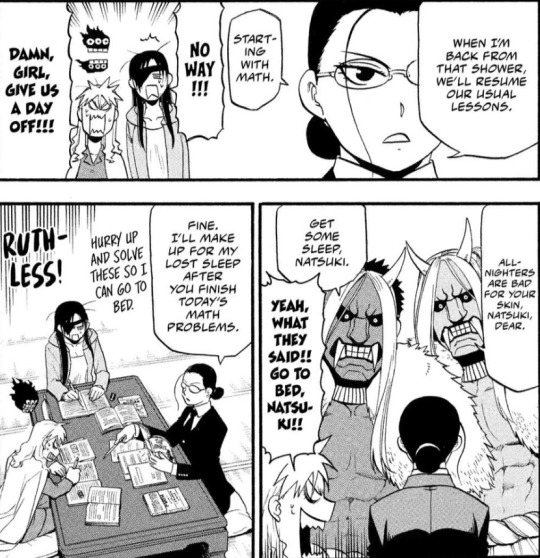
23. She officially has been with the Kagemoris longer than Asa, as Hagure-sensei is familiar with Gab but not Asa. She has also been good friends with Asa for a long while

Aaaaand that's it. That's all we know about Gab until now. If you've read this far, I'm honoured.
Part 2
#yomi no tsugai#ynt#daemons of the shadow realm#gab#gabby#gabriel#ynt gab#ynt gabby#ynt gabriel#joe william frederic gabriel I#kirk douglas woodgrave gabriel II
8 notes
·
View notes